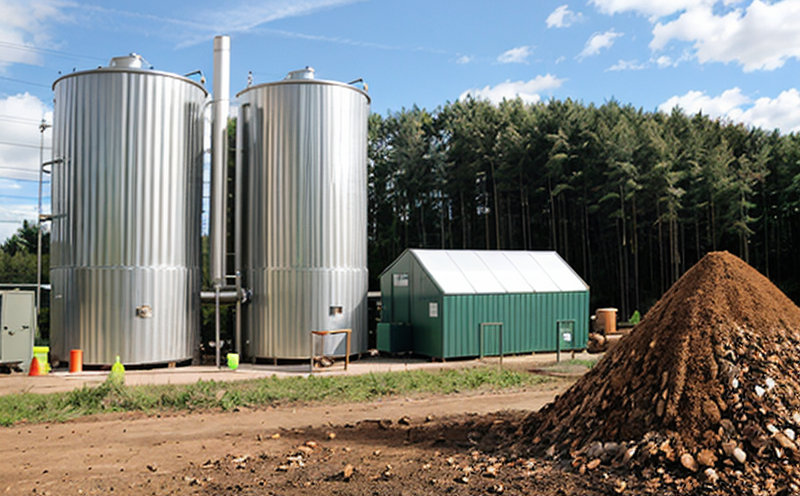EN 15410 Heavy Metals in Solid Recovered Fuels
The EN 15410 standard specifies the method for determining heavy metals in solid recovered fuels (SRFs), which are a type of biomass-derived fuel produced by sorting and cleaning waste materials. This service is critical for ensuring that SRFs meet regulatory requirements set forth by environmental protection agencies worldwide.
Solid recovered fuels play a pivotal role in the transition towards more sustainable energy sources, particularly within Waste-to-Energy (WtE) facilities. By recycling municipal solid waste into fuel, SRFs reduce landfill usage and decrease greenhouse gas emissions from decomposing organic matter. However, heavy metals present in these materials can pose environmental risks if not controlled effectively.
The EN 15410 standard aims to provide a standardized approach for quantifying cadmium (Cd), chromium (Cr), copper (Cu), lead (Pb), mercury (Hg), and nickel (Ni) in SRFs. Compliance with this standard ensures that the fuels used in WtE processes are safe, reliable, and environmentally responsible.
Our laboratory adheres strictly to the procedures outlined in EN 15410. This includes thorough sample preparation steps such as sieving, drying, homogenization, and digestion using appropriate acids before analysis by inductively coupled plasma optical emission spectrometry (ICP-OES) or atomic absorption spectroscopy (AAS).
The primary goal of this service is to assist clients in meeting regulatory requirements while also ensuring the quality and safety of their SRF products. By providing accurate and reliable test results, we help our customers comply with stringent environmental regulations, enhance product reputation, and foster trust among stakeholders.
Our team of experts ensures that every step from sample receipt to final report generation adheres meticulously to EN 15410 guidelines. This dedication guarantees consistent, high-quality testing outcomes which are essential for maintaining compliance and achieving business objectives related to sustainability and environmental responsibility.
Applied Standards
The EN 15410 standard is widely recognized for its robust framework in assessing heavy metals content within SRFs. It covers all aspects from sample preparation through to analytical techniques and reporting formats.
- Cadmium (Cd): Essential for monitoring trace amounts that could indicate contamination during processing or sourcing of raw materials.
- Chromium (Cr): Important for evaluating potential toxicity levels from both hexavalent chromium (CrVI) and trivalent chromium (CrIII).
- Copper (Cu): Commonly found in various forms throughout SRFs, its presence must be managed carefully to avoid adverse effects.
- Lead (Pb): One of the most hazardous heavy metals; strict limits are imposed by regulatory bodies worldwide due to its high toxicity.
- Mercury (Hg): Another extremely toxic substance, requiring stringent control measures during testing and disposal processes.
- Nickel (Ni): While necessary in small quantities as a catalyst or alloy component, excessive nickel can lead to corrosion issues in combustion systems.
Our laboratory strictly follows these parameters to ensure accurate measurements and reliable results. Compliance with EN 15410 not only meets regulatory requirements but also enhances the overall quality of SRFs produced by our clients.
Scope and Methodology
The scope of EN 15410 includes the determination of trace elements such as cadmium, chromium, copper, lead, mercury, and nickel in SRFs. The methodology involves several key steps:
- Sample Preparation: Properly sieved, dried, and homogenized samples are prepared according to specified protocols.
- Digestion Process: Samples undergo acid digestion using nitric acid (HNO₃) or perchloric acid (HClO₄), followed by dilution with deionized water.
- Analysis: The digested solutions are analyzed via ICP-OES or AAS to quantify the target heavy metals accurately.
- Data Interpretation and Reporting: Results are interpreted based on predefined thresholds, ensuring compliance with relevant environmental legislation.
This comprehensive approach ensures that each test conducted adheres closely to international standards. Our laboratory maintains strict quality control measures throughout the entire process, from sample handling to final report issuance.
By following these rigorous procedures, we can deliver precise and accurate results that meet or exceed the expectations of our clients. This commitment to excellence is reflected in every aspect of our service offering, ensuring consistent reliability and trustworthiness.
Use Cases and Application Examples
The EN 15410 standard finds application across various sectors where SRFs are utilized, including municipal waste management, industrial waste processing, and renewable energy production. Here are some practical examples:
- Municipal Waste Management: Ensuring that the SRF produced from urban waste meets environmental standards before being used in WtE facilities.
- Industrial Waste Processing: Verifying the heavy metal content of SRFs derived from manufacturing processes to prevent contamination issues.
- Renewable Energy Production: Providing data on the quality of SRFs that will be burned in boilers or gasifiers, ensuring efficient combustion and minimal emissions.
- Procurement: Helping procurement teams evaluate suppliers based on their compliance with environmental regulations.
- R&D Engineers: Supporting research projects aimed at improving the efficiency and sustainability of SRF production processes.
- Quality Managers: Assisting in maintaining consistent product quality by monitoring heavy metal levels throughout different stages of manufacturing.
- Compliance Officers: Facilitating compliance with local, national, and international environmental regulations related to waste management and recycling.
In each case, the accurate measurement of heavy metals is crucial for ensuring that SRFs are safe for use in WtE processes while minimizing potential risks associated with improper handling or disposal.





